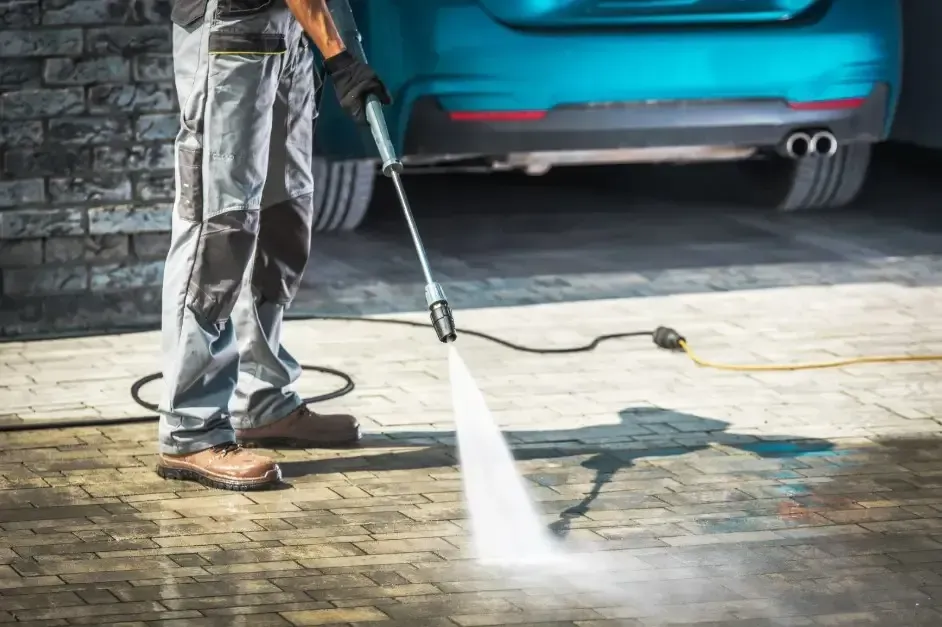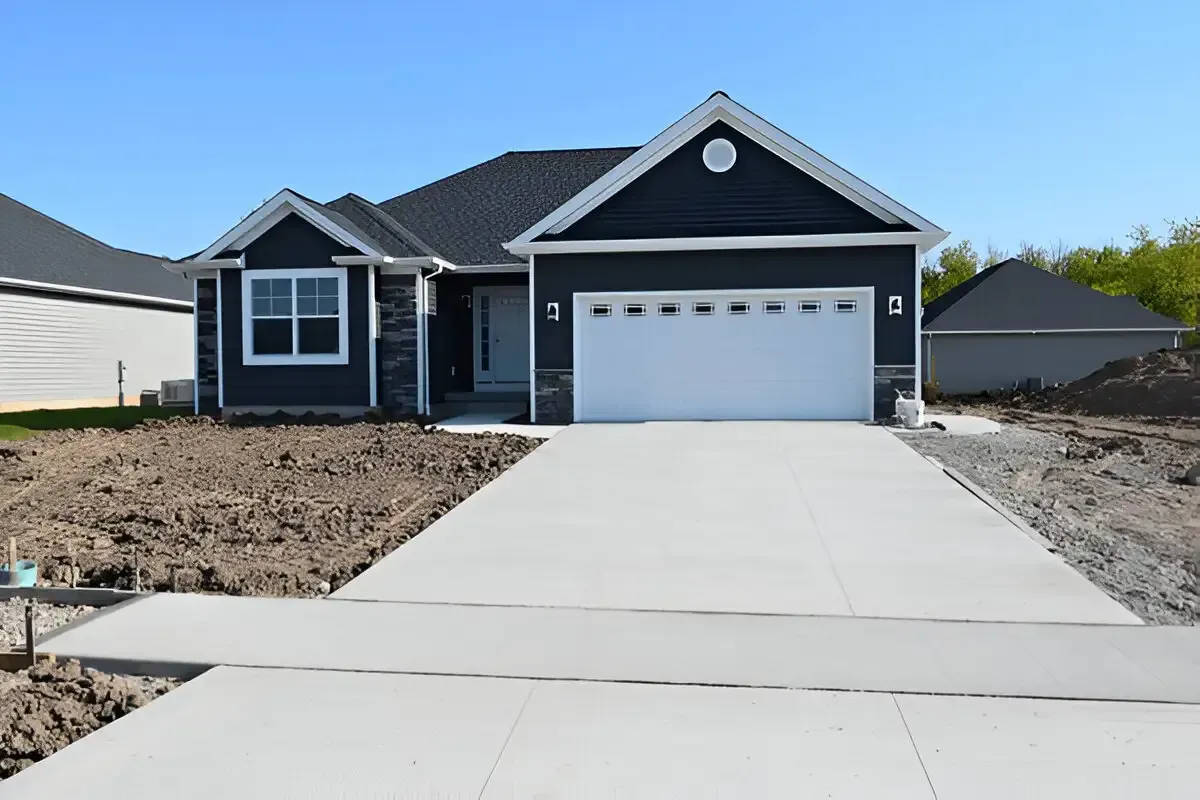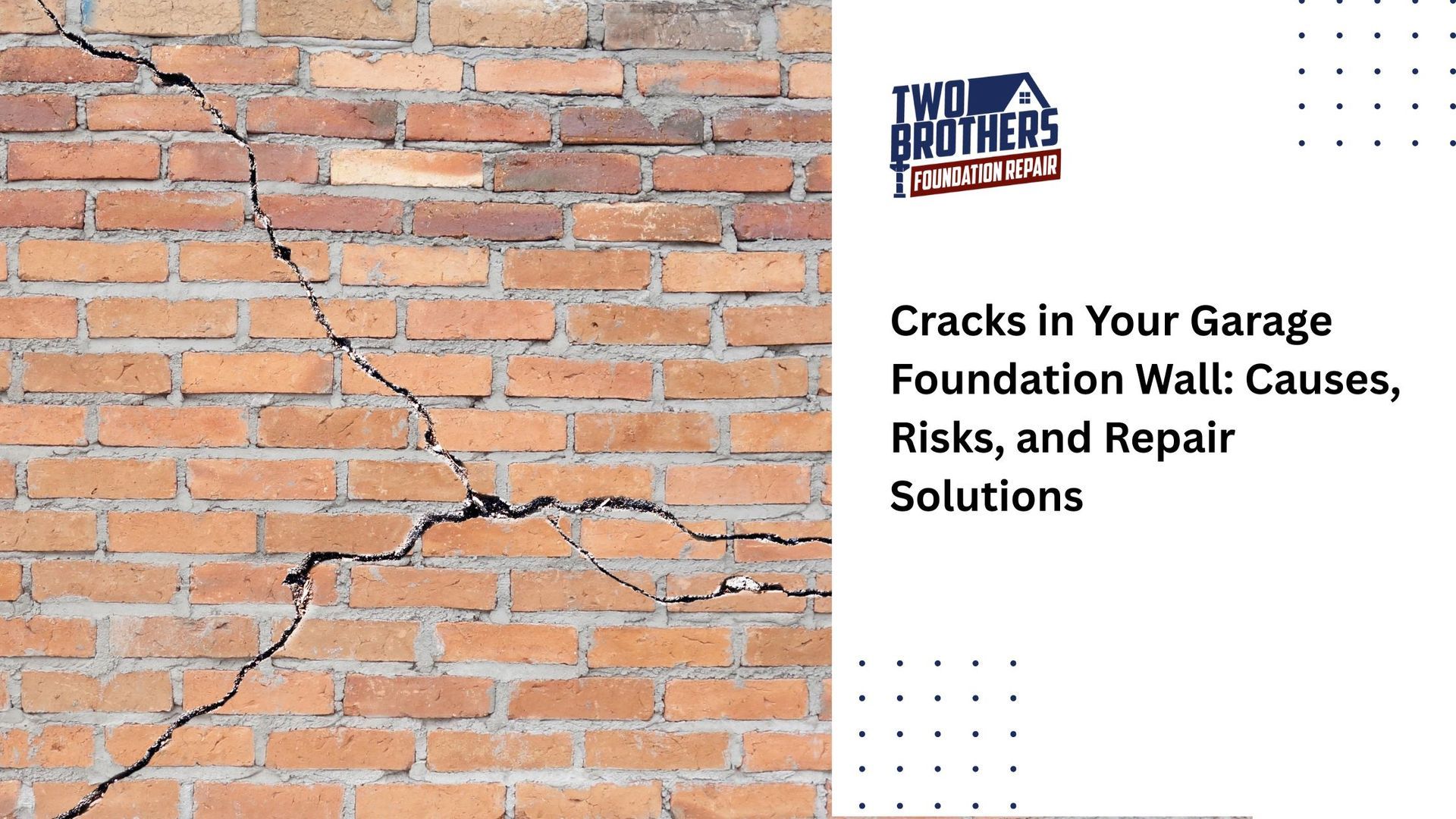Concrete Driveway Repair: How to Fix Cracks and Extend Life
Concrete driveways don’t stay perfect forever. Cracks spread, slabs shift, and the surface starts to look rough. It isn’t just ugly; it can be a tripping hazard, too. The longer you ignore those little signs, the more expensive the fix usually gets.
That’s why
concrete driveway repair at the right time is important. Timely driveway repairs prevent costly replacements. In this guide, we'll walk through common problems, solutions, pricing, and how to extend lifespan.

Why Homeowners Need Concrete Driveway Repair
Most people don’t notice their driveway until something feels off. A crack gets bigger. A section sinks. Water starts pooling. These are the core reasons homeowners need concrete driveway repair:
Cracks
A thin line across the surface might not look serious. However, water seeps in and slowly erodes the slab. Bigger cracks are worse.
Anything wider than a ¼ inch usually means the ground below is shifting. If you see cracks spreading like scales, that’s a failing base. At that point, patching won’t save it.
Uneven Surfaces
If one section of the driveway drops, the ground under it has moved. That’s what causes low spots, trip hazards, and drainage issues. Sometimes slabs rise instead. Roots or wet soil push them up. Either way, the surface is no longer stable.
Surface Wear
Flaking or peeling concrete is a sign that the top layer is wearing out. Water will break it down faster. Crumbling edges mean the structure is losing strength. Even fading or dark stains usually show that the surface is eroding, not just aging.
Water Problems
Puddles are a sign that the driveway isn’t draining properly. That water seeps into cracks and makes the problem worse. The bigger danger is water running toward your house. That can end up in your foundation and cost you far more.
Further Read:
Signs Your Houston Foundation Might Be Damaged and Why It Matters
Different Types of Concrete Driveway Repair
Driveway problems don’t all need the same fix. Some issues are simple. Others take heavier work. Here’s what you should know about the main repair options.
Crack and Joint Repair
Small hairline cracks are easy to handle. You can seal them with a flexible caulk to keep water from sneaking in. Bigger structural cracks need epoxy injections.
These bond the concrete back together and strengthen weak spots. Even driveway joints need attention. Sealing them blocks water and dirt from causing extra stress.
Concrete Patching
Patching is used when a spot breaks down instead of the whole slab. Think holes, chipped corners, or flaky spots. The bad concrete is cut out, cleaned, and filled with a strong patch mix. Modern materials bond well and hold up longer than basic cement.
Concrete Resurfacing
Resurfacing gives a worn driveway a new look. A thin overlay goes right over the old slab. Once it heals, the surface looks fresh again. You can even add color or stamped designs that mimic stone or brick.
Slab Jacking or Lifting
Slab jacking tackles sunken concrete sections effectively. Contractors drill small holes and inject foam or grout underneath. The material lifts slabs back to the proper level. It's more affordable than tearing everything out.
Sealing and Coating
Sealing won’t close up cracks, but it helps stop new ones from forming. Acrylic sealers give your driveway a nice shine while keeping out water and oil.
Epoxy’s perfect if you’re worried about spills or harsh chemicals. A clear sealer after repair is like insurance for your concrete.
Full Replacement
There are times when repairs just won’t hold. When concrete crumbles or the foundation fails, replacement becomes necessary. This involves removing old material, fixing the base, and pouring fresh concrete.
Sure, it costs more at first, but it gives you a driveway built to last for decades.
You may also like:
Common Foundation Repair Methods
How Much Does Concrete Driveway Repair Cost?
Driveway repair costs depend on the type of work, the size of the slab, and local labor. Here’s what homeowners usually pay in 2025.
| Repair Type | Average Cost | What It Covers |
|---|---|---|
| Crack Repair | $100 – $300 | Sealing cracks to stop water intrusion and prevent further damage. |
| Resurfacing | $1,500 – $4,000 | Applying a new layer over the slab, the cost varies by size and finish. |
| Lifting/Slabjacking | $500 – $1,500 | Raising sunken slabs by pumping material underneath to level the surface. |
| Replacement | $5,000 – $15,000 | Removing old concrete, preparing the base, and pouring a brand-new slab. |
Crack Repair:
Cracks are the most affordable repair. A contractor seals them to keep water out and slow future damage.
It doesn’t take much time to fix a crack. But doing it right away can save you a ton of money and headaches down the road.
Resurfacing:
Instead of ripping out the whole slab, resurfacing just lays a new coat on top. What you’ll pay depends mostly on how big the driveway is and the kind of finish you pick. A plain surface sits at the low end, while stamped or colored finishes raise the price.
Lifting or Slabjacking:
If part of the driveway sinks, slabjacking brings it back up. It’s far more affordable than replacement and works well if the rest of the slab is solid.
Replacement:
Replacement is the most expensive fix, but sometimes it’s the only choice. Driveways with deep cracks, crumbling edges, or major sinking usually can’t be saved.
First, the old concrete comes out. Then the base is rebuilt, and a new layer is poured. This process gives you a driveway that can last for decades.
Similar Read:

Why Choose Professional Repair Over DIY?
DIY concrete repair looks simple and cost-effective at first. Even 52% homeowners would choose to DIY a home renovation project over hiring a contractor to save on costs.
But the reality is that most of those repairs do not last.
Concrete driveway repair is more complicated than it seems. Small mistakes in mixing, prep, or curing can ruin the job. And even when the patch looks fine, DIY repairs rarely solve the real issue under the surface.
Hiring a professional can make a difference. According to research, 76% of homeowners were happy with the results, versus 71% who did it themselves.
Improper Mixing
Concrete needs the right mix of water, cement, and aggregate to hold up. Too much water makes it weak and porous. In contrast, too little prevents the mix from bonding.
Even minor mistakes leave weak spots that fail quickly. Hand-mixed concrete is also rarely uniform, which means patches that appear solid usually break down within a season.
Poor Preparation
Even with the right mix, repairs fail when the slab is not prepared. Concrete does not bond to dirt, dust, or loose fragments.
First things first, clean the area. It’s the step most DIYers skip, and that’s why their repairs split or pop out after just a few months.
Inadequate Curing Time
Concrete cures; it does not simply dry. If it cures too fast, shrinkage cracks form, and the repair loses strength. DIY patches are often left unprotected and cure unevenly.
Without proper curing, the new material breaks down faster than the old concrete it was meant to fix.
At Two Brothers Foundation Repair, we repair more than the surface. We address the cause. We use polyurethane foam lifting to fill voids, stabilize soil, and raise slabs evenly. Once hardened, it creates a solid base for a lasting repair.
Plus, we prepare every site the right way, use industrial-grade materials, and cure repairs correctly. We also know the local soil and climate, which means our solutions are built to last here.
How Two Brothers Foundation Repairs Your Concrete Driveway
Here’s how our expert team repairs a concrete driveway:
Step 1: Inspect the driveway
We walk the slab with you and mark every defect. We note hairline cracks, spreading cracks, broken edges, and any settled panels. Then we recommend patching, resurfacing, lifting, or replacement based on what we find.
Step 2: Clean the area
We clean loose debris and sweep thoroughly. We wash the surface with a pressure washer or a strong nozzle. For oil or grease, we apply a degreaser, scrub with a stiff brush, and rinse clean. We let the slab dry fully so that repair materials bond properly.
Step 3: Repair sunken sections, if any
We confirm soil loss or a weak subgrade under the slab. We drill small holes and perform slabjacking to fill voids and lift panels. Our mix of sand, cement, foam, and additives restores support and sets the elevation.
Step 4: Resurface for larger cracks or surface problems
We treat wide cracks, spalling, and peeling with a bonded overlay. We spread a thin layer over the old concrete to create a fresh, uniform surface. For alligatored areas, we use Perma-Patch Black Fill to fill and seal in one pass.
Step 5: Patch or fill small cracks
We clean and dry cracks under one-quarter inch. We fill them with Perma-Patch 6690 ColdFuze Gray, a cold-pour sealant that meets ASTM D6690. We apply through a nozzle or pour and pull with a squeegee for full coverage.
Step 6: Smooth and blend
We level raised seams and soften transitions after curing. We use a hand sander or an orbital sander with coarse grit. Your tires roll smoothly, and the surface looks consistent from curb to garage.
Step 7: Apply a sealer (optional)
We protect the finished surface with a quality sealer if you want added defense. Perma-Patch Black Fill stands up to de-icing salts, gasoline, oil, and common chemicals.
Plan for foot traffic after about one hour and vehicles after two. Avoid sharp steering for six to eight hours; twenty-four hours gives the best cure.
How to Maintain Your Driveway After Repair

You want the repair to last, not just look good today. Proper sealing can add five to seven years. Plus, with these simple habits, you can protect both the slab and your wallet:
Inspect Your Driveway Regularly
Walk it once a month and actually look. Spot hairline cracks before they widen and invite water. Press a toe on the slab corners and feel for rocking. Catch problems early and call Two Brothers if anything grows.
Seal Every 3-5 years
Put sealing on your calendar, not your wish list. Wash and dry the slab the day before you roll. Lay a thin, even coat and respect cure times. Sealing blocks moisture and slows the return of surface wear.
Clean Debris Monthly
Sweep grit, leaves, and soil so they do not grind the surface. Rinse after storms and push water off low spots. Scrub oil and fertilizer stains the same day you see them. Clean concrete lasts far longer than dirty concrete.
Avoid De-icing Salts and Harsh Chemicals
Skip salt because it attacks concrete over time. Use sand or kitty litter for winter traction. Shovel early so ice does not bond hard. Rinse in spring to clear any leftover residue.
Limit Heavy Loads
Keep dumpsters, lifts, and moving trucks off the slab. Park heavy vehicles on the street when you can. If a delivery must sit, lay thick plywood to spread the weight. Protect the edges since they fail first under point loads.
Maintain joints and small cracks
Vacuum or blow out joints so water cannot sit inside. Dry the area and run a flexible joint sealant that moves with the seasons. Fill hairline cracks before rain and freeze cycles make them spread. Small fixes today beat big fixes later.
Watch drainage and keep water moving
Aim downspouts away from the driveway and foundation. Add extensions if splashback returns to the slab.
Regrade tiny low spots that hold puddles after storms. Dry soil under the slab stays stable and keeps the panels level. Homeowners often overlook how water affects not just driveways but also outdoor spaces like pools, where regular care such as pool maintenance helps prevent bigger issues down the line.
Inspect in Every Season
In spring, wash off the winter grime, look for cracks, and add sealer if it’s due. By summer, check after heavy rains and fix soft spots before they spread.
Come fall, clear away leaves and stains, and get the driveway ready for winter. During winter, shovel quickly and use sand for traction.
Conclusion
Concrete driveways don’t stay perfect forever. Cracks appear, slabs sink, and the surface starts to wear down. That’s when timely concrete driveway repair really matters.
And at Two Brothers Foundation Repair, we handle everything from sealing small cracks to lifting sunken sections, resurfacing worn concrete, and even full replacements if needed.
FAQs
1. How do I know if my concrete driveway needs repair or replacement?
Small cracks can be fixed easily. Large cracks or wobbly slabs mean it's time for a full replacement.
2. What happens if you don’t repair a cracked driveway?
Cracks don’t just sit there. Water seeps into cracks and freezes, creating more damage. Before long, your slabs are all uneven. Drainage becomes a nightmare. The repair costs will shock you.
3. Is it cheaper to repair or replace a concrete driveway?
Repairs are cheaper upfront, and sealing cracks might be a couple of hundred bucks. A full replacement costs thousands. But if the driveway’s failing underneath, repairs won’t last, and replacement is actually the better deal long term.
4. How long does a repaired concrete driveway last?
If the base is solid and you keep up with maintenance, repairs can extend its lifespan by another 10–15 years. A brand-new driveway done right can last 20–30 years.
5. Does repairing a driveway improve home value?
Yes. A clean, well-maintained driveway enhances the overall appearance of the house and gives potential buyers confidence. You won’t get every dollar back, but you’ll see a good chunk of it when you sell.






